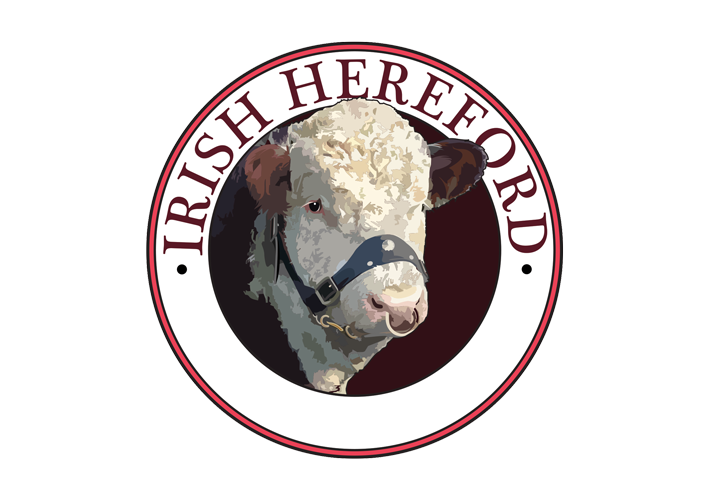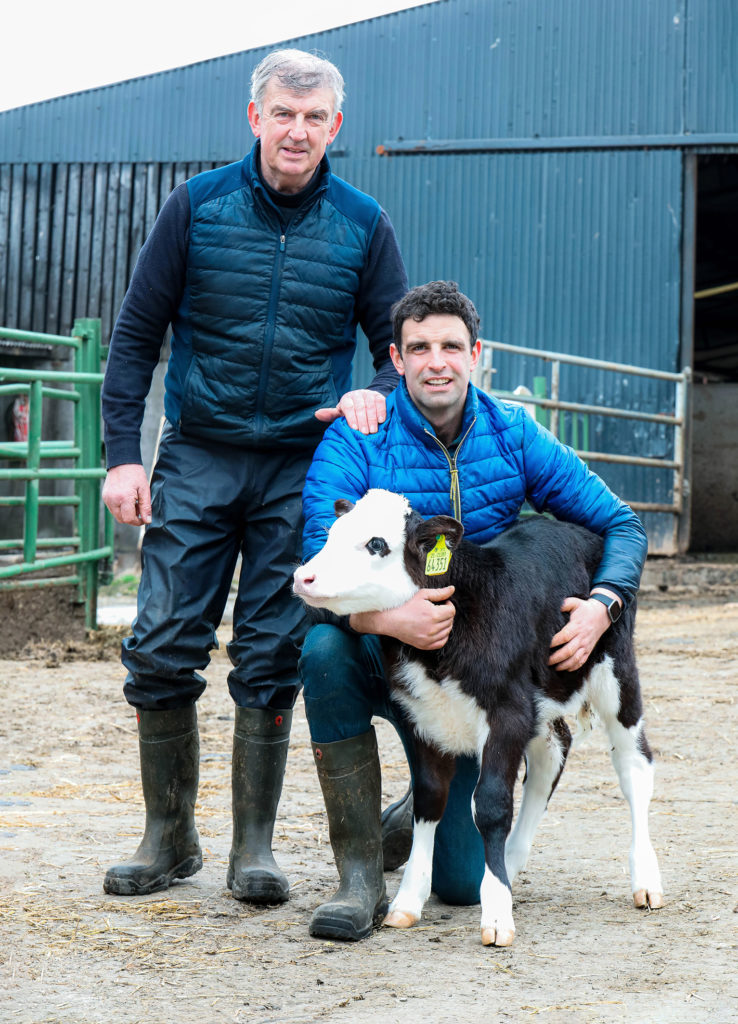Robbie Ennis farms in partnership with his father Paul in Guidenstown, near The Curragh, Co. Kildare, just 3 miles from Kildare town and explored the use of Hereford sires.
Robbie is the fifth generation to farm in Guidenstown and runs a winter milk herd. During the quota era, the farm was milking 140 cows and a portion of the land was in tillage.
In more recent years, 300 cows are being calved down, with 70% spring-calving and the remainder calving in the autumn.
Historically, Robbie and Paul reared all their calves to beef but since milk quotas were removed, they are finishing less beef animals and 2021 will see all calves being sold off-farm with the exception of their replacement dairy heifers.
Hereford sires at Guidenstown farm
The farm consists of 152ha – some of which is for growing maize silage for the cows. Some beet is also bought in from a local supplier for feeding on-farm.
Plans to increase the cow herd started some time before quotas were removed when the Ennis family carried out work on the farm including building more slurry storage in 2008.
In the past, the Ennis family used continental sire breeds on the farm but with gestation length proving to be more important in an expanded herd size, a swing to Hereford sires was explored. With increased dairy cow numbers brought more focus on calving and calf saleability.
Choosing a bull and calf health
Robbie has a set strategy when it comes to choosing a bull. Stars and figures are not central to any decision he makes. He says that the dairy beef index (DBI) is not really a influencer for him, however he does place an emphasis on carcass figures and feels it is important to examine the carcass weight and conformation indexes.
Robbie mainly looks at the bull physically with the primary focus being that of bull conformation and length. Robbie likes ‘the bull that stands out’.
Importance is placed on calf vigour with the Hereford suited, as whitehead calves are “vigorous at birth and with no compromise on calf quality” as well as being “an easy sell”. Calving ease is important but they are happy with a dairy cow calving difficulty figure from 4-5%.
Robbie also feels that the Herefords are “easier handled and just more docile” adding that “even some other bucket-reared breeds can be a bit flighty”.
Calf housing
There is ample calf housing available on the farm and Robbie believes that this is important with weather issues occurring when calves are due to be sold or if herd movement restrictions were imposed.
He believes “it is also important not to have too many batches of calves being put through the same pens to reduce health problems with calves”.
To ensure each calf gets the proper start in life, they make significant efforts to guarantee that every calf gets enough colostrum at birth, with most being bottle fed a sufficient volume.
The Ennis family are the perfect example of the larger dairy farmer that places an economic value on all calves born on their farm and understands the message of sustainability needed for their dairy enterprise.
All calves are currently sold at between 18 and 24 days, “once they are strong enough for sale”.
Challenges and successes
There are several challenges facing Irish farmer’s everyday, but Robbie feels the biggest threats are environmental challenges for the dairy industry as a whole, in terms of needing to have and maintaining a green image.
Consumer information or misinformation is a big problem also; Robbie thinks more resources and money need to be used to educate the general public about food origins and practices that farmers carry out, to ensure the health and quality of their product is paramount.
Success to Robbie Ennis means being better in any or every area of the farm than the previous year and continuously making improvements to the whole farm and farm system.
Increasing production is a major motivator for the father and son duo. Though downtime is scarce on the farm, taking some time off, where possible, is also important for all involved. It is vital to rest where possible. Robbie likes to watch the horse racing and with the Curragh racecourse only three miles away – it’s no wonder. For the days spent closer to home, “watching a good rugby game is as good a break as any.”
For more information about Herefords and upcoming bull sales, visit www.irishhereford.com, www.irishherefordprime.com or click here




